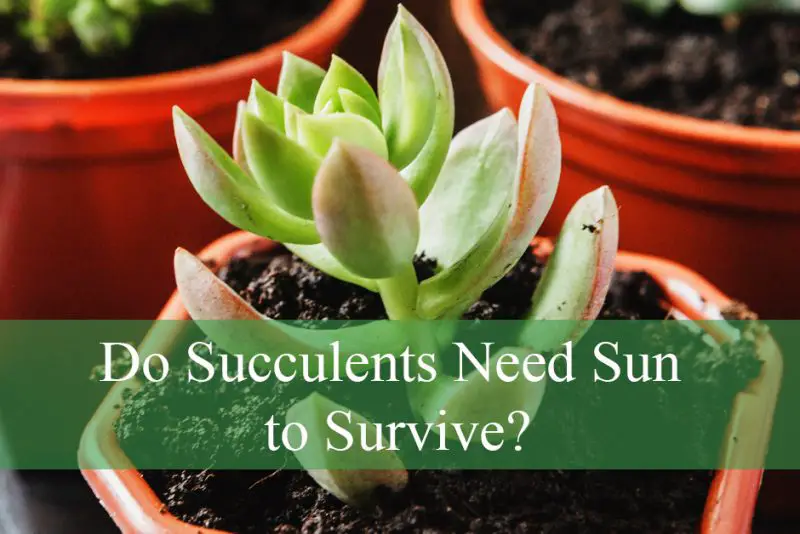Succulents are often associated with arid environments, deserts, and blazing sun. Many people assume these hardy plants must thrive in direct, intense sunlight to survive. While this is partly true, it’s also one of the most common misconceptions about succulent care. Not all succulents need the same amount of sunlight, and misunderstanding their lighting needs can lead to sunburn, etiolation, or even plant death.
The relationship between succulents and sunlight is more nuanced than it seems. Some succulents, especially those native to the desert like Echeveria or Aloe vera, do prefer bright, direct light. Others, such as Haworthia or Gasteria, evolved in shady conditions and can thrive in indirect or filtered light. Knowing the difference between these types can be the key to keeping your succulent healthy and vibrant.
Sunlight plays a vital role in a succulent’s ability to photosynthesize, maintain its compact shape, and produce rich coloration. Without proper light exposure, even the hardiest succulent can suffer. So, while succulents do need light to survive, the type and amount of sunlight required can vary significantly depending on the species and growing conditions.
Why Too Much Sunlight Can Be Harmful

It might seem counterintuitive, but giving your succulents too much sunlight can be just as harmful as not giving them enough. Many indoor gardeners make the mistake of placing their plants on a south-facing windowsill with all-day exposure, assuming it’s the best location. However, prolonged direct sunlight, especially during hot summer months, can lead to sunburn—visible as bleached patches or scorched edges on the leaves.
Succulents are capable of storing water in their fleshy leaves, which makes them excellent at surviving droughts. But this same characteristic makes them more sensitive to overheating and dehydration when exposed to intense light. The water in their leaves can evaporate quickly, leading to shriveled, crispy foliage and a stressed plant overall.
In some cases, the damage caused by sun overexposure is irreversible. Sunburn can create permanent scars on the leaf surface, making the plant more vulnerable to disease and pests. This is especially true for newly propagated succulents or ones recently moved from shade to sun without a gradual acclimatization period.
The Dangers of Insufficient Light
Just as too much light can be damaging, too little light can be equally detrimental. Succulents kept in low-light environments may survive for a time, but their health will slowly decline. One of the first signs of insufficient light is etiolation—a condition where the plant stretches out, becoming leggy and pale in its attempt to reach a better light source.
Etiolated succulents often lose their compact form and symmetry, turning into long, droopy versions of themselves. While this is not immediately fatal, it is a clear indicator that the plant is not receiving the energy it needs to thrive. Over time, the lack of light will weaken the plant’s overall structure, making it more prone to pests, rot, and nutrient deficiencies.
Another issue that arises with inadequate light is the loss of color. Many succulents develop vibrant shades of red, purple, or orange when exposed to sufficient light. In low-light conditions, these pigments fade, and the plant may revert to a dull green. While this doesn’t mean the plant is dying, it signals a lack of optimal growth conditions.
Indoor vs. Outdoor Sunlight: What’s the Difference?
Many succulent owners assume that placing their plant near a sunny window indoors is equivalent to outdoor sun exposure, but the two are quite different. Outdoor sunlight is unfiltered and stronger, while indoor light is typically diffused by glass, curtains, or walls. As a result, a spot that seems bright to us may not provide enough light intensity for succulents.
When grown indoors, succulents often need to be placed in the brightest possible spot, such as a south- or west-facing window. Even then, supplemental lighting may be required, especially during the winter months or in homes with limited natural light. Grow lights can be a lifesaver in such situations, helping to maintain the health and form of your succulents.
Outdoors, succulents generally receive more consistent and intense light, but this doesn’t mean they should be exposed to full sun all day. Depending on your local climate, some succulents will need partial shade to prevent overheating. If you live in a very hot or dry region, morning sunlight and afternoon shade are often ideal.
How to Gradually Introduce Succulents to Sunlight
If you’ve recently purchased a succulent from a nursery or moved one from indoors to outdoors, it’s essential to avoid shocking the plant by exposing it to full sun right away. This is a common mistake that can lead to irreversible sun damage. The best way to transition your succulent is by gradually increasing its light exposure over one to two weeks.
Begin by placing the plant in a spot with bright, indirect light for a few hours a day. After a couple of days, increase the duration or slightly move it closer to direct sunlight. Monitor the leaves closely during this process. If you notice any signs of stress—like softening, discoloration, or scorching—pull the plant back to a shadier area and give it time to recover.
This acclimatization period is especially important for indoor succulents being moved outside. The light intensity outside is far stronger than what they are used to, and without a gentle introduction, they may suffer from burns or water loss. Once the succulent has adjusted, it can better tolerate longer periods of direct light without harm.
Choosing the Right Succulent for Your Light Conditions
Not all succulents are created equal when it comes to light requirements. Some species, like Sedum, Agave, and Echeveria, love the sun and will flourish in bright, direct light. Others, like Haworthia, Crassula, and Sansevieria, prefer shadier conditions and will suffer if placed in intense sunlight.
Understanding your environment is key to selecting the right succulent. If you have a lot of natural light in your home or garden, sun-loving varieties will likely thrive. But if you live in an apartment with limited sunlight, it’s better to choose low-light tolerant species. This ensures your plants are set up for success from the beginning.
When unsure, start with hardy varieties that can adapt to a range of conditions. Over time, observe how each plant responds to its placement. Succulents are quite communicative—they show stress through their leaves and growth patterns, making it easier for attentive gardeners to make the right adjustments.
Seasonal Changes in Light and How to Adapt
As seasons change, so does the amount and intensity of sunlight your succulents receive. During summer, days are longer, and the sun is more intense. In contrast, winter brings shorter days and weaker sunlight. Adapting your care routine to these changes can prevent many common succulent issues.
In the summer, consider providing partial shade during the hottest part of the day, especially for young or tender plants. Moving potted succulents under a patio cover or using shade cloth can help prevent sunburn. Increased heat also means faster evaporation, so monitoring soil moisture becomes crucial.
During winter, indoor succulents may suffer from light deprivation. This is when supplemental grow lights can make a significant difference. Positioning lights 6–12 inches above the plant and keeping them on for 10–14 hours a day can simulate natural light cycles and promote healthy growth even in the darkest months.
Can Succulents Survive Without Any Sunlight?
While succulents are resilient, they cannot survive indefinitely without sunlight. Sunlight is essential for photosynthesis—the process by which plants convert light into energy. Without it, succulents may survive for a short period but will eventually weaken, lose color, and become more vulnerable to diseases.
Some people attempt to grow succulents in windowless rooms, offices, or dim corners. In such cases, survival depends entirely on the presence of artificial lighting. Not just any lamp will do; full-spectrum grow lights that mimic natural sunlight are necessary to support photosynthesis and overall health.
Even with artificial lighting, succulents benefit from occasional exposure to natural light. Rotating them between indoor and outdoor environments, when possible, can enhance their growth and appearance. However, remember to acclimate them properly each time you make the switch.
Common Signs Your Succulent Needs More or Less Light
Recognizing how your succulent is reacting to its current lighting condition is crucial for long-term success. When a plant isn’t getting enough light, it may stretch, lean toward the light source, and lose its vibrant coloration. Its growth slows down, and new leaves may appear pale or underdeveloped.
On the other hand, a succulent receiving too much sunlight may display burned or scorched leaves. These will appear dry, brown, or white, particularly on the tops and outer edges. Leaf drop, puckering, and soft spots are also indicators that the plant is stressed from excess sun.
The goal is to find that sweet spot—bright but not burning, shaded but not dark. This often requires some trial and error, especially as environmental conditions change. By staying observant and responsive, you’ll quickly learn what works best for each plant in your collection.
Expert Tips for Ensuring Your Succulents Get the Right Light
To master succulent care, becoming familiar with your local environment is essential. The amount of natural light you receive will vary based on your home’s orientation, season, and weather patterns. South-facing windows usually offer the most consistent light for indoor plants, while east-facing windows provide gentle morning sun.
If your space doesn’t offer enough light, grow lights are a worthwhile investment. Choose LEDs designed for plant growth and avoid general desk lamps. Keep them on a timer to simulate daylight cycles, and adjust the height and intensity based on how your plant reacts.
Remember to rotate your succulents every week or two to ensure even light exposure on all sides. This prevents lopsided growth and encourages a symmetrical shape. Lastly, be patient. Plants grow slowly, and it may take several weeks to see visible improvement after adjusting their light conditions.
FAQs About Do Succulents Need Sun to Survive?
Can succulents grow in full shade?
Some succulents, like Sansevieria or Gasteria, can tolerate full shade, but most prefer at least a few hours of indirect light. Full shade may hinder healthy growth over time.
How many hours of sunlight do succulents need?
Most succulents need around 4–6 hours of bright, indirect sunlight daily. Sun-loving varieties may require even more, especially when grown outdoors.
Can I use artificial light instead of sunlight?
Yes, artificial grow lights can effectively supplement or replace natural sunlight. Full-spectrum LEDs are recommended for best results, especially in low-light homes.
What does a sunburned succulent look like?
Sunburned succulents often have bleached, brown, or white patches on their leaves. These spots are dry, brittle, and may eventually fall off.
Should I move my succulent outdoors?
You can move your succulent outdoors if the temperature and light levels are suitable. Gradually acclimate the plant to avoid shock or sunburn.






